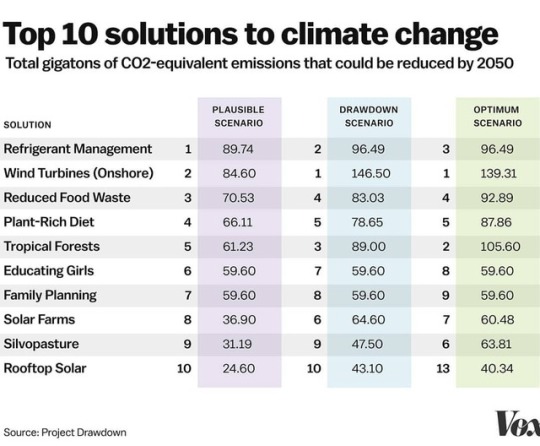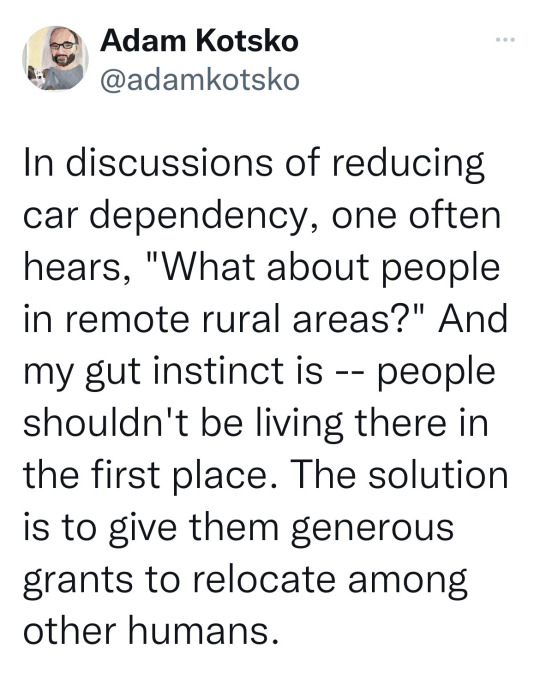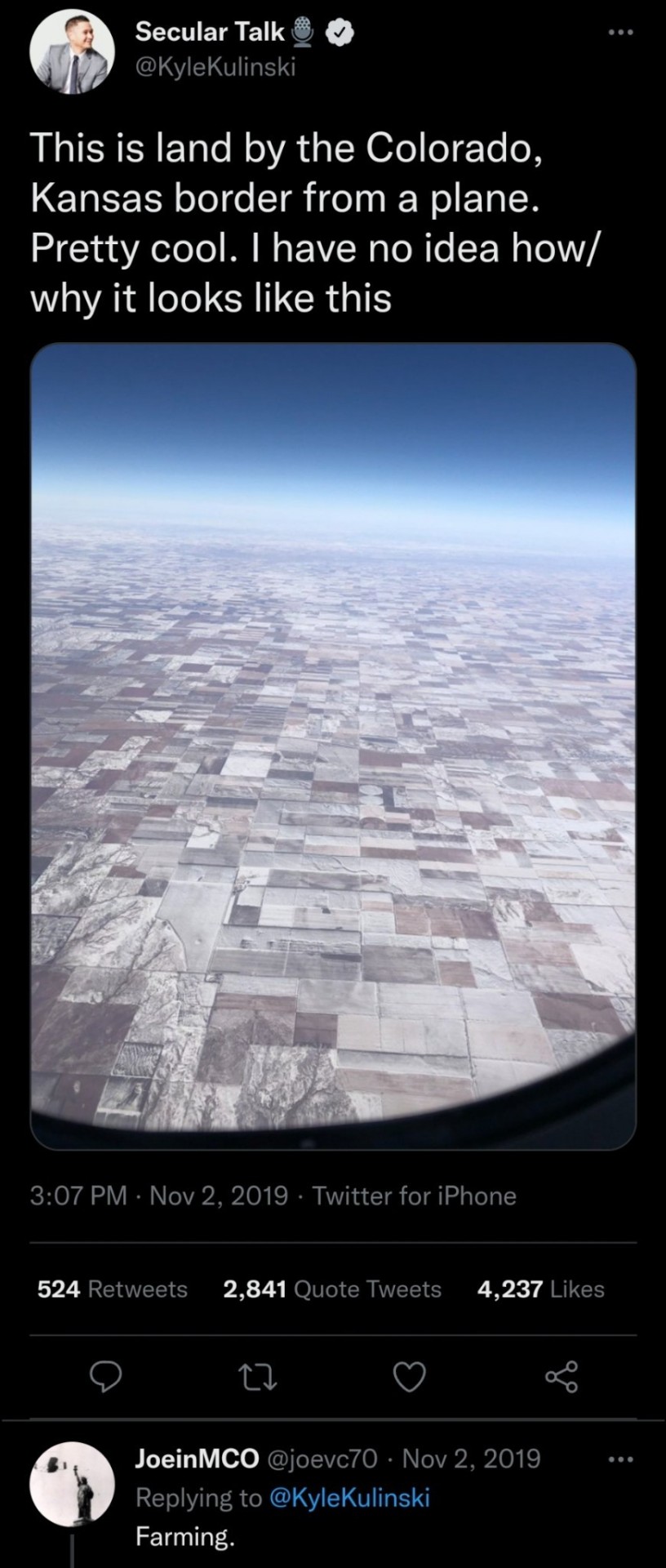#projectdrawdown
Explore tagged Tumblr posts
Text
"It’s amazing what investing in clean technology can do. A 10% drop in emissions in a single year!" - Dr. Jonathan Foley, Exec. Dir. #ProjectDrawdown
#ThereIsNoPlanetB #TheFutureIsClean --- "It’s amazing what investing in clean technology can do. A 10% drop in emissions in a single year!" --- Dr. Jonathan Foley Executive Director, Project Drawdown
#Project Drawdown#There Is No Planet B#The Future Is Clean#Dr. Jonathan Foley#Germany 2030 Emissions Target#Clean Energy#Climate Change#Climate Crisis
0 notes
Text
https://x.com/projectdrawdown/status/1710359272133923009?s=12&t=OnB8MjPTlh07WVPWk2-Ofw
0 notes
Photo

#5 Keep the Forests.. Plant Hemp instead. . . . . . #growhemp #hemp #hemphome #climatechange #neildegrassetyson #stopdeforestation #projectdrawdown #jungmaven #wearhemp #highstylelowimpact #junggeneration https://www.instagram.com/p/BwxoiYmnRzx/?utm_source=ig_tumblr_share&igshid=dl0mk30de9jh
#5#growhemp#hemp#hemphome#climatechange#neildegrassetyson#stopdeforestation#projectdrawdown#jungmaven#wearhemp#highstylelowimpact#junggeneration
2 notes
·
View notes
Photo



Gisele at a book launch in Brazil this weekend 🍃
19 notes
·
View notes
Text
Land is a critical component of the climate system, actively engaged in the flows of carbon, nitrogen, water, and oxygen—essential building blocks for life. Carbon is the core of trees and grasses, mammals and birds, lichens and microbes. It’s the fundamental material of all living organisms. Plants and healthy ecosystems absorb carbon through photosynthesis and store it in biomass.

Almost all temperate forests have been altered in some way—timbered, converted to agriculture, or disrupted by development. Restoring them sequesters carbon in biomass and soil.
If you own land that once was forested, consider restoring all or part of it to its natural state.
Volunteer with a reforestation, invasive species removal, or habitat restoration project.
In their biomass and soil, forests are powerful carbon storehouses. Protection prevents emissions from deforestation, shields stored carbon, and enables ongoing carbon sequestration.
If you own or manage forestland, identify and adopt practices that maximize long-term carbon storage.
Contribute to organizations and preferentially purchase products that help protect forests.
Secure land tenure protects Indigenous peoples’ rights. With sovereignty, traditional practices can continue—in turn protecting ecosystems and carbon sinks and preventing emissions from deforestation.
Support efforts to protect the rights of Indigenous people to traditional lands.
As you pursue climate solutions, consult Indigenous environmental leaders.
213 notes
·
View notes
Photo

All are invited the panel to this event will be fantastic accompanied by 70 Artists Standing for an End to Global Warming. www.wcaga.org March.12.2020.7pm--Ga.State Univ.Perimeter/Clarkston campus.
0 notes
Video
vimeo
(via Climate Solutions 101 presented by @ProjectDrawdown)
Information about this from Inside Climate News:
Want to take a course in climate solutions? Now you can—for free—online. [The course consists of six units, with units ranging from nine minutes to 23 minutes.]
Project Drawdown, a nonprofit climate solutions organization, unveiled its six-part Climate Solutions 101 course this week, giving teachers, community groups and ordinary people access to key, achievable solutions to address climate change.
Each unit includes a lecture, conversations with experts in the climate field, graphics and additional readings. The course is open to anyone, but these resources are designed with educators in mind.
“We really are looking toward a cultural shift,” Drawdown Learn director Elizabeth Bagley said. “Educators are one group that has the potential to shift culture, to change and influence the ways in which people are approaching a really thorny, wicked problem like climate change, and instead of approaching it with fear and hopelessness, approaching it with a sense of curiosity and opportunity.”
Bagley said her organization found there were plenty of resources available to learn about the problems of climate change, but there was a gap in information when it came to solutions. The course dives into what solutions are available and what needs to be done to keep the worst of global warming at bay.
“All the solutions we looked at, we have in our hands today, we just have to scale them,” Bagley said. “So getting solutions into people’s hands as quickly, safely and equitably as possible is the most important thing for us.”
5 notes
·
View notes
Photo

Definition #12/100. Educating girls is one of the most powerful levers available for avoiding emissions by curbing population growth. Women with more years of education have fewer and healthier children. Educated girls realize higher wages and greater upward mobility, contributing to economic growth. Their rates of maternal mortality drop, as do mortality rates of their babies. They are less likely to marry as children or against their will. They have lower incidence of HIV/AIDS and malaria. Their agricultural plots are more productive and their families better nourished. Education also shores up resilience and equips girls and women to face the impacts of climate change. They can be more effective stewards of food, soil, trees, and water, even as nature’s cycles change. They have greater capacity to cope with shocks from natural disasters and extreme weather events. Today, there are economic, cultural, and safety-related barriers that impede 62 million girls around the world from realizing their right to education. Family Planning - Securing women’s right to voluntary, high-quality family planning around the world would have powerful positive impacts on the health, welfare, and life expectancy of both women and their children. It also can affect greenhouse gas emissions. 225 million women in lower-income countries say they want the ability to choose whether and when to become pregnant but lack the necessary access to contraception. Currently, the world faces a $5.3 billion funding shortfall for providing the access to reproductive healthcare that women say they want to have. Honoring the dignity of women and children through family planning is not about governments forcing the birth rate down (or up, through natalist policies). Nor is it about those in rich countries, where emissions are highest, telling people elsewhere to stop having children. When family planning focuses on healthcare provision and meeting women’s expressed needs, empowerment, equality, and well-being are the result; the benefits to the planet are side effects. Climate solution via @projectdrawdown #neologismsproject #climateart #the100dayproject https://www.instagram.com/p/CNa2mEzMjbK/?igshid=zls98qut11r5
1 note
·
View note
Photo

Expressing my creative side🌞🌊 It’s 7 degrees Fahrenheit in Pennsylvania right now, and I’d like more than anything to be swimming in the oceans’ waves, under the midday sun, instead... But what’s up with our oceans’ health lately? Did you know that oceans absorb HALF of the carbon dioxide recaptured from the atmosphere, and because there’s so much carbon in our atmosphere, ocean acidification is growing every day? Ocean “deserts” due to these conditions are rapidly expanding, but scientists are working to restore marine life despite this in a new, breakthrough way. They are doing so by performing “Marine Permaculture” planting thousands of new kelp forests to sequester much of the CO2 that is causing the acidification of our oceans. Floating kelp forests could sequester billions of tons of carbon dioxide, while providing food, feed, fertilizer, fiber, and biofuels to the world. SO AMAZING! Find out more via @projectdrawdown. Photo by @brettastic. Collage by Me 💕#marine #permaculture #projectdrawdown #model4greenliving #planetearth #oceanhealth (at Pennsylvania)
0 notes
Text
Well. The carbon cycle waits for no one.
Is that really how the Midwest is supposed to look? Or is that just what white settlers did with it?
Hey, remember the dust bowl? Yeah. A lot of that "farmland" is barren and degraded from relentless monocropping. That's why rural agricultural communities in the US became so remote. They'd destroy the land, then march out further looking for fresh land to consume. There were always other options and other agricultural systems. Systems that allow farmers to stay in one place and sequester carbon and enrich the soil. But they never chose those options. They just planted cash crops. And they just kept marching further and further destroying land wherever they went. And that's why they're scattered far apart today.
And ultimately, it's not necessary or efficient to live scattered like that. Suggesting people unscatter slightly is not an outrageous or offensive statement. 200 years of aimless destructive monocropping and the isolation that system forced on people is hardly worthy of nostalgia. My great grandma was born on a rural farm in the midwest and she hated everything about it. Most of all, she hated the dust.
That sandy degraded soil has sat there untouched since the dustbowl. Maybe it's time to do something about it.


The other thread on this was started by chuds so I'm gonna reboot it myself: it's really sad that people don't understand the Midwest is where food gets grown and we're supposed to grow a lot more of it.
Suggesting people just move to the cities is astonishingly clueless and would only make the situation worse. Some Americans have truly no idea what it's like out there, tiny communities separated by hour long drives if you even have transport, millions of people really are just abandoned and left behind by what we consider progress and have no way out.
19K notes
·
View notes
Photo

RT @RobertLeeRead: I've added 3 great short video interviews by @BradBurkhart1 for @ProjectDrawdown to my essay, here is the first: https://t.co/L1aeWNluvd All 3 are at: https://t.co/esoUmbwiBn (via Twitter http://twitter.com/hackernoon/status/1041809190979698688)
1 note
·
View note
Link
0 notes
Photo
I know that renewable energy isn't a cure-all. We'll also need to cut our energy use and develop more efficient societies. We'll need to replace 90% of private transit with public transit. We'll need to urbanize so we can share energy resources more efficiently. And we'll need to abandon the capitalist/GDP-oriented global structure. We'll need to develop regenerative distributive economies which is a far more efficient model for society.
There's a hundred different solutions we'll need to implement. Our climate solutions need to be as varied and diverse as the biodiversity we destroyed. It may take some time to implement and perfect each solution. But we will not have that time if we continue to burn fossil fuels.
There are several solutions to the energy crisis. But there is only one problem at the center of it. Fossil fuels. Sure, you can find articles of people claiming that cutting fossil fuel emissions to zero would cause too many problems. But all of those articles are from oil and gas lobbyists. There is no "ethical life-preserving and friendly way" to continue oil and gas production. There's only greenwashing. That's all you'll ever get from the oil and gas industry. They will gladly greenwash the deaths of hundreds of millions of people.
We can continue to fight over oil and gas and and burn fossil fuels and fail as a species.
Or we can abandon capitalist competition. Put fossil fuel dictators in prison. Put Musk in prison and reclaim all his lithium. And develop an efficient cooperative global resource network. If we do all that, we'll survive as a species.
If we stop burning fossil fuels, that will buy us time to develop more energy storage solutions.

The Middle East alone has nearly half of the world’s oil reserves. The economy of its countries is largely based on the income it provides. But the exploitation of shale hydrocarbons has changed the situation.
by @LegendesCarto
53 notes
·
View notes
Photo

@UKGreenbuilding: If Green Roofs Cover 30% & Cool Roofs Cover 60%, We can Save 800 Megatons of Carbon Dioxide #Emissions and $3 Trillion: https://t.co/EtgEMQy6dr #greenroofs #coolroofs #greenbuilding #sustainability #carbon #climatechange #greentech #cleantech #technology #roofing @ProjectDrawdown https://t.co/OjQJ6GxDry
0 notes
Photo

Definition 20/100: Peatlands, also known as bogs or mires, are neither solid ground nor water but something in between. Peat is a thick, mucky substance made up of dead and decomposing plant matter. It develops over hundreds, even thousands of years, as wetland vegetation slowly decays beneath a living layer of flora and in the near absence of oxygen. Although these unique ecosystems cover just 3 percent of the earth’s land area, they are second only to oceans in the amount of carbon they store—twice that held by the world’s forests, at an estimated 500 to 600 gigatons. Protecting them through land preservation and fire prevention is a prime opportunity to manage global greenhouse gases. Because peatlands’ typical carbon content is over 50 percent, they become powerful greenhouse chimneys if disrupted. When peat is exposed to the air, the carbon it contains gets oxidized into carbon dioxide. It can take thousands of years to build up peat, but a matter of only a few to release its greenhouse cache once it is degraded. Luckily, 85 percent of the world’s peatlands are intact. Though not as effective as halting degradation before it starts, restoring drained and damaged peatlands is an essential complement to protection. Climate solution via @projectdrawdown #neologismsproject #climateart #the100dayproject https://www.instagram.com/p/COMyblhM2ny/?igshid=1ee6yxt9zkibn
0 notes